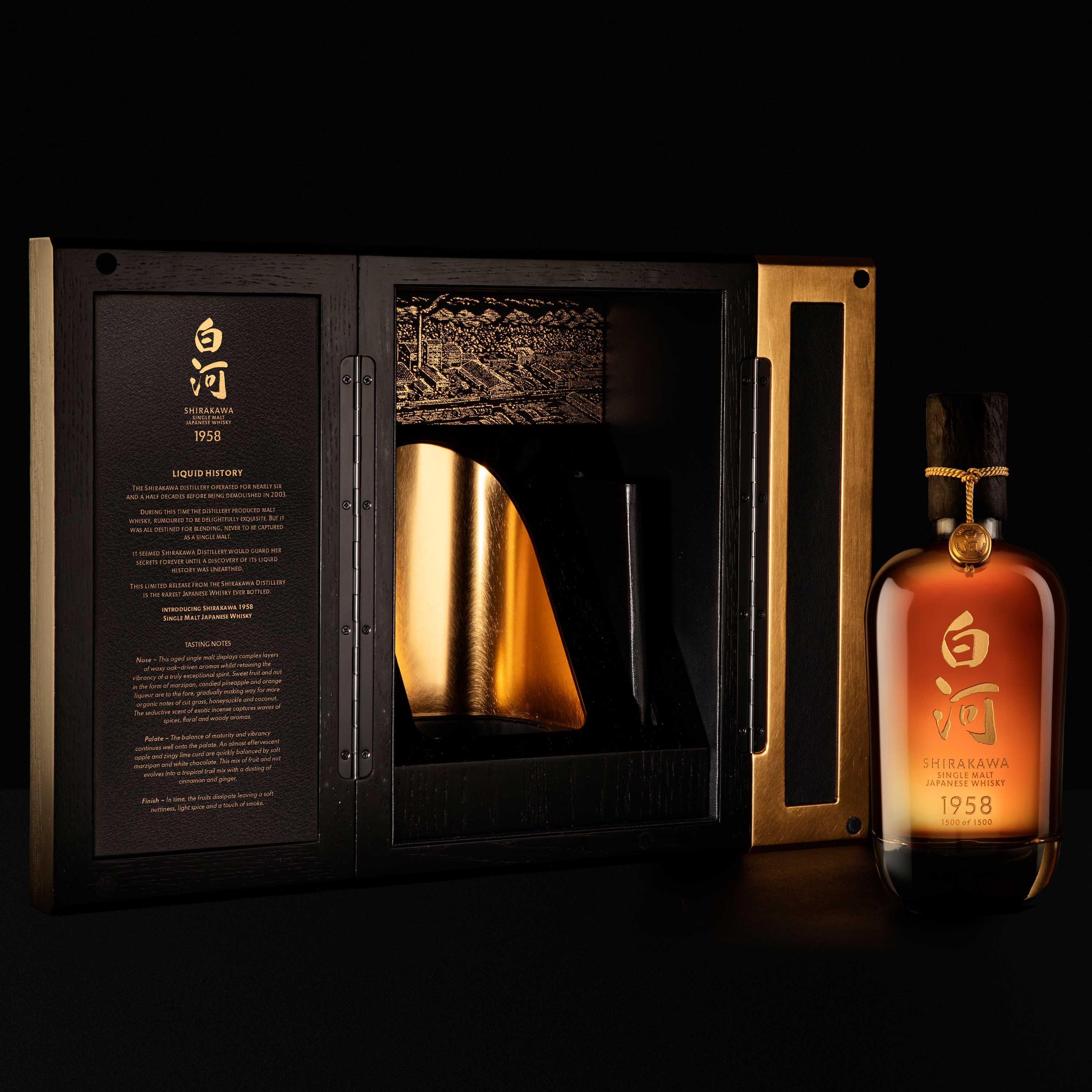News today of a truly amazing find - a one-off bottling of 1958 vintage Japanese single malt whisky from the Shirakawa distillery, which was closed and dismantled in 2003. Buckle up, because this is quite a ride.
Shirakawa distillery is not a familiar name to most whisky fans - even Japanese whisky fans. The distillery was founded in the Fukushima Prefecture north of Tokyo in 1939 by Daikoku Budoshu, a subsidiary of the Takara Shuzo company, and only made Japanese single malt whisky for a brief period that began in 1951 and ended in 1969. Much of the rest of Shirakawa’’s production history is vague or unknown, but it is believed to have made shochu for most of the rest of its active years.
Takara Shuzo’s ownership of Daikoku Budoshu fell foul of Japanese anti-monopoly legislation in 1947. In order to comply with the new law, Takara was forced to sell Daikoku, but they purchased Shirakawa from their former subsidiary in the process. Soon afterwards, Shirakawa began to make single malt whisky for Takara’s King and Ideal blended whisky brands. Daikoku Budoshu, meanwhile, made up for the loss of Shirakawa by building a brand new distillery in 1956: Karuizawa.
Shirakawa’s whisky was made on stainless steel pot stills for the first few years, but by 1958 these had been replaced with copper stills. Notes on Shirakawa from a March 1990 production summary book at Takara Shuzo show that in the period between 1958-1966 the distillery practised five-day fermentations and aged its whisky primarily in domestic Mizunara oak.
During its whisky years, all of Shirakawa’s single malt normally went into Takara’s blending vats, and until recently it was believed none had survived - although towards the end of the 1980s a Shirakawa Pure Malt 12-year-old was released containing whisky from the distillery’s last two years of production (1968-69) blended with 12-year-old Islay whisky.
Fast forward to this century, and a few years ago Stephen Bremner, the managing director at Tomatin distillery (which Takara Shuzo has owned since 1986) became curious about Shirakawa and began researching the distillery and making enquiries with his colleagues at Takara Shuzo. In 2019, these efforts were rewarded with the discovery of a small parcel of Shirakawa single malt whisky that was stored in stainless steel tanks at another Takara subsidiary, the Takanabe shochu plant now known as Kurokabegura.
This whisky had been distilled at Shirakawa in 1958, and was aged in oak casks at the distillery before being transferred into large ceramic jars of the type used for shochu, and subsequently into steel tanks. These tanks were moved to Takanabe in 2003 when Shirakawa was demolished, and remained there until being discovered in 2019.
If you’ve made it this far, by now it must be obvious that this is a very special whisky indeed. Shirakawa 1958 is a one-off limited edition of 1500 bottles and represents the first and last ever bottling of Shirakawa’s Japanese single malt whisky - Takara Shuzo have confirmed that there are no further stocks in their inventory.
The exact age of this Shirakawa single malt is unknown, as there are no records stating when the whisky was transferred from its casks into the jars. The cask type for this whisky is also uncertain, but is highly likely to be the Mizunara oak that the vast majority of Shirakawa’s whisky was aged in. What we can be sure of is that this Shirakawa 1958 is the earliest vintage Japanese single malt whisky ever bottled - the earliest vintage whiskies by Karuizawa and Yamazaki are both from 1960, and there are no earlier vintage single malts from any other Japanese whisky distilleries that were active in the 1950s.
Shirakawa 1958 is one of the whisky events of 2022, and these bottles will no doubt be highly sought-after by Japanese whisky collectors for many years to come. Full credit to Stephen Bremner at Tomatin, who are distributing this Shirakawa 1958, and to his colleagues at Takara Shuzo who helped bring this enormously significant piece of Japanese whisky history to light.
Shirakawa 1958 is available on our site now. We'll leave you with Dave Broom's tasting notes for this remarkable dram:
Nose: Resinous, slight dry earth, dried citrus peels, a hint of wax. Aromatic. A drop of water makes it more vibrant and also shows clear maturity as well as a hint of incense. Exotic.
Palate: The palate is expansive with a succulent texture and hints of fragrant grass. Fruits emerge in the middle. Layered, spiced, and dry. Water brings out ash from an incense burner, a satisfying mouthfeel and surprisingly perky acidity.
Finish: Nicely balanced and persistent on the finish which picks up mint flavouring and makes it more camphor-like.

